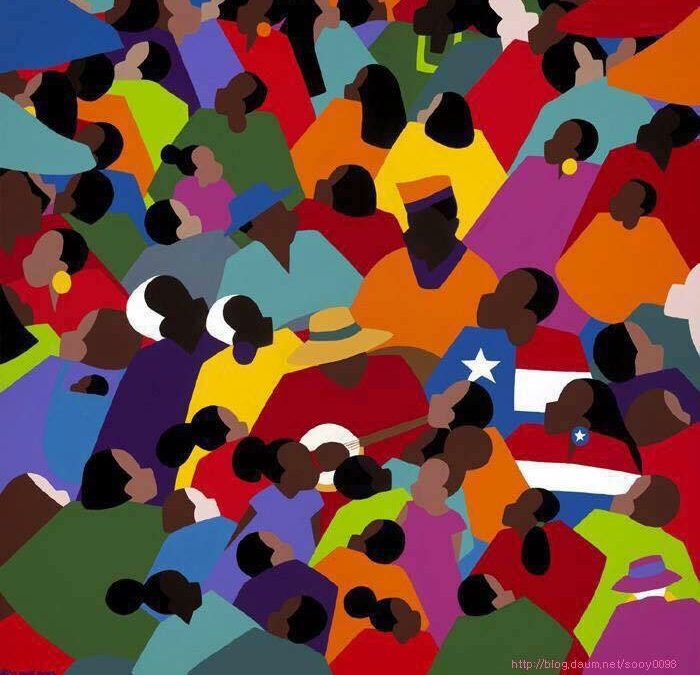A BRAIDING OF ARCHETYPES: FLOWER BUDS, A CHRYSALIS, THE PHOENIX
By Leslye Colvin
*Permission to use this post was granted by the writer
(This was written in February as an assignment for a program of the Haden Institute concluding today.)
My days with the Haden Institute approach their end while converging with other aspects of my life. Just as my first intensive overlapped with my final Living School symposium, my final spiritual direction intensive is overlapping with my relocating to Maryland for a new job. As our experiences converge, we are reminded they do not occur in isolation. Each is part of a complex tapestry including and transcending our individual lives. Through the process of spiritual direction, we may observe flowers blooming beyond spring, a caterpillar being transformed into a butterfly, or a phoenix rising from its ashes.
Braiding
Braids are common in many cultures. The interlacing of strands creates a strength much greater than that of the loose strands. Long before the creation of synthetic fibers, people braided natural fibers to serve a variety of functional and ornamental purposes – from hair to sweetgrass to palms to textiles to leather. Regardless of the substance, each strand surrenders to the fingers of the braider.
I have no memory of learning to braid. It is as much a part of my lived experience as learning to walk or talk. Having been born with a minimum of hair, I imagine my mother taking pride in it growing long enough for her to begin the ancient maternal practice of braiding. A practice passed on from one generation to the next -- it connects me to my African ancestors. Grasping three even strands and weaving a plait requires great attention from the novice, but inevitably well-practiced fingers move quickly and rhythmically with little thought overlapping one strand atop another. My father even learned to braid our hair on the rare occasions my mother was away.
In processing my journey and my time as a student at the Haden Institute, the idea of a braiding of archetypes is a way for me to speak to how I see the unfolding of my life as I prepare to achieve a long-held goal to earn certification as a spiritual director. The braid I present is abstract so as not to be limited by physical characteristics. Yet, in my mind, I see the strength of this braid of archetypes in its ability to reveal the human capacity for life, growth, and transformation – each infused with, immersed in, and sustained by mystery.
Caregiving
On October 18, 2015, I completed putting my few worldly possessions in storage and drove home to become my mother’s caregiver. Returning home was to enter the chrysalis of surrender in accepting the unknown. The term “caregiver” is embodied in countless ways. For me, the practice of caregiving was somewhat similar to being in a chrysalis – especially in my mother’s last two years as she struggled with advanced dementia. We were present to the unknown of what we knew. If perchance I forgot, I would hear her prayer for the strength to bear it – meaning the dying process.
When caring for an aging parent whose health is declining, “caregiver” is commonly used as a gentle and polite way of saying accompanying a loved one to their last breath. In our case, this occurred almost six years after my return.
Is the taking of this last breath an experience of chrysalis? While the word is a noun, can it also be a verb – especially for those of us who believe life continues beyond the veil? Does our spirit continue to breathe after the body stops? When we leave our body is our spirit awaiting or entering a transformation?
Having lost her mother at the age of 18, I have childhood memories of conversations in which Mama tried to prepare me for her passing. She wanted to prevent me from experiencing the trauma of an early and unexpected death of a parent. As I struggle with this assignment, I have a profound epiphany allowing me to see my time of accompanying my mother has also a time in which the Great Spirit was preparing me to continue living in the absence of her physical presence.
For at least two years, my mantra has been “All flowers don’t bloom in spring.” It is an expression of how I speak of a deep awareness of my personal growth since my father’s passing a decade ago and especially during my time as my mother’s caregiver.
I came home broken and bruised – feeling as though I had failed achieving the life I had imagined or the one hoped for or expected of me. With no life partner or children, I felt it important to be described by my career. Yet, even it seemed to have alluded me. I came to know a different sense of feeling barren. Had I wasted my life and all I had received?
Going through the remaining pieces of my mother’s jewelry, I discovered a pendant of a phoenix. It reminded me of my earliest days in Atlanta. As a new college graduate, I was excited to begin the next chapter of my life in this city of rebirth. After being burned by Union forces during the Civil War, the city chose the mythical bird who was born to new life from his own ashes as its symbol, and the Latin word resurgens for its motto. The English translation of the term is rising again.
Finding the pendant reconnected me to memories from my early 20s when I had an abundance of idealism and naivete. Living in the city and working in the heart of downtown, the phoenix somehow nestled herself in my heart for this time. As we rise together, she affirms me and my journey.
Witnessing Life
There is so much of life we learn simply through what we observe. Countless observations are made before we are verbally equipped to enunciate them. Many of them are taken for granted. It may be comparable to knowing how to reach a destination by driving without being able to give directions to someone else. While we may be able to reach a common destination or understanding, we undoubtedly have differing experiences and paths.
My neighbor’s Japanese magnolia blossomed a month ago in January. Although she has passed, seeing it bloom annually before her February 2nd birthday brings a smile as it reminds me of spring approaching. As I write this, my parents’ azaleas have begun to bloom. In time, so will the dogwoods and the crepe myrtle. And then we must remember the camellias and roses that seem to bloom on no one’s schedule as they bloom throughout the year. When the beauty of the camellia unfolds in January, it reminds me of the pending freeze on the horizon. It is not a judgment but an awareness of what is.
I am surprised by the buds unfolding in my life at this time. Where many of my age are preparing for retirement, I am relocating to a different region to begin a new job. These new blooms excite me and those who are witnesses of my journey.
During my time with my first spiritual director, I gained an understanding of the work before me. It was work that only I could do. I also learned about her role in accompanying me. On days when I sat across from her crying, her response was to simply be present to me. She recognized my tears as part of my process. Tears were not an expression of weakness, but a release from the weight of inner burdens.
Yesterday was a difficult day for me. I seem to have been enveloped in sorrow and grief. I reached out to a friend via text message. She replied by saying that she was occupied, but available to speak with me if I needed her. To my surprise, I felt a need for me to be present to the sadness I was experiencing. Speaking to my friend would have been a distraction and avoidance. I felt as though being present to or leaning into my sadness would allow something to rise. I saw it like the growth which sprung forth from my early experience with spiritual direction. By leaning into the sadness, I was surprised to recognize a relationship between caregiving and spiritual direction.
Spiritual Direction as Caregiving
In contemplating my thoughts for this assignment, I began to see spiritual direction as a practice of caregiving. Maybe my earlier thoughts were too harsh and distorted my caregiving experience with my mother. While I did accompany her to her last breath, our journey included a countless number of other breaths filled with awe and laughter, fear and anxiety, joy and silence. Most of all, these breaths were filled with love and gratitude – the love of a mother and child, the gratitude for sharing these days, these months, these years of flowers blooming.
In its essence, caregiving is an act of love modeled through being present to the other. It is about accompanying people through a period of their lives. As we breathe with them, we invite them to be aware of God’s movement in their life. We hold the tension created by pauses. We respect the silence.
Like caregiving, each experience of spiritual direction, spiritual accompaniment, is unique. While both practices require being present to the moment, each practitioner places their own fingerprint on their work. The practice itself is shaped by the director, the directee, and the dynamics generated by their interactions. As a result, any given director responds to each directee in a manner unique to that person.
May this realization lead me to respect the directee before me and the Spirit embracing each of us, and our sacred work. It is my responsibility to be present to the person, and how the Divine reveals herself to us.
PLANTED IN GOOD SOIL
WITH SUN AND WATER
THE BUSH GREW
ENCOURAGED, NURTURED, LOVED
IN THE EARLY YEARS
IT SEEMED TO BLOOM AS EXPECTED --
UNTIL GOING DORMANT
DOUBTING ITS OWN PURPOSE
ASHES OF DISAPPOINTMENT, JUDGMENT, AND SELF-DOUBT
SHE ENTERS A CHRYSALIS
WAITING IN AND FOR THE UNKNOWN
UNTIL THEY GIVE RISE
TO TODAY’S LIFE RE-EMERGING
STRONG AND CONFIDENT
AS THE BUDS BLOOM AGAIN
TO DREAM, TO HOPE, TO THRIVE

